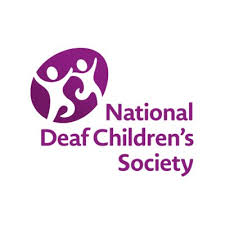Personal experiences – cochlear implants
A feature of this website is the inclusion of personal experiences of the topic under consideration. This makes it possible to include different perspectives, including accounts from professionals and consumers, and different views on decisions that have been made.
We welcome these contributions at any time, and guidance for contributors is given in the ‘overview of the project‘ section.
We would like to acknowledge the help we have had from Tricia Kemp and CICS in helping obtain some of the personal accounts used.
We are also happy to include here links to signed contributions.
Index
1. A personal journey; Sue Archbold: currently CEO of The Ear Foundation, previously Coordinator, Nottingham Cochlear Implant Programme
2. My personal reflections on cochlear implants; Kathy Owston, a Teacher of the Deaf for more than thirty years and for the past eight years an Implant Centre Teacher of the Deaf (ICToD) at St Thomas’ Hospital Auditory Implant Centre
3. Ethan Mount-Jones by his mother (from CICS publication ‘Tell it like it is’)
4. Raphael Shtrosberg– It feels like a miracle: by Joanna Shtrosberg, mother of Raphael who was implanted at the age of 11 months
5. Robert Jones: the decision to have a second implant
6. Living life to the full with confidence: Polly Saines: who is profoundly deaf with bilateral cochlear implants
7. My deafening silence; Philip Gerrard, profoundly deaf from birth, implanted as an adult, currently CEO of Deaf Direct
8. My Cochlear Implant Experience; Anna Herriman
In Account 1, Sue Archbold describes the early days of cochlear implants and something of the hostility there was when they were first introduced. In Account 2, Kathy Owston describes her experience of paediatric cochlear implantation from 1995 to the present day, commenting on the changes she has observed over that time. In account 3, Ethan’s mother describes the family’s experiences with Ethan who has auditory neuropathy spectrum disorder, and the efforts the family had to make to achieve appropriate placement for Ethan. In account 4, Joanna Shtrosberg describes the period from her son’s hearing loss being diagnosed to his receiving cochlear implants at the age of 11 months, during which the family had to absorb a great deal of information about deafness and implantation. In account 5, Rob’s parents write about Rob’s decision to have a second implant and while, it has made a difference, the impact has been ‘subtle’. In Account 6, Polly Saines describes the ups and downs of life with implants.
Accounts 6 and 7 are from adults’ perspectives but included because they give very detailed accounts about the experience of an implant. Philip Gerard describes the sensations provided by an implant particularly in the early days following implantation while Anna Herriman shows what can go wrong if the implant itself is faulty. Her account tells how eventually this was remedied.
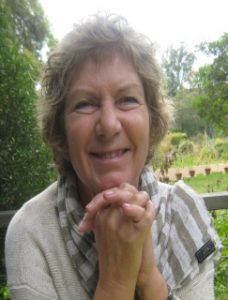
Taken, with permission, from her book “Archbold, S. (2010) Deaf Education: Changed by Cochlear Implantation?” Nijmegen; Thesis Radboud University, Nijmegen Medical Centre.
While carrying out my research degree in 1986, I began teaching a boy who had lost his hearing following a fall, and his audiologist, Barry McCormick, began to think, with his mother, about a cochlear implant for him. The boy received only vibro-tactile sensations from the most powerful hearing aids available at that time; his speech deteriorated and accessing the curriculum in a mainstream class became almost impossible. The trauma of losing his hearing entirely at the age of six was devastating for him and his family. At that time, the only option was the RNID single channel cochlear implant, available in London, but only if he were an adult. If I had thought that deaf education gave rise to controversy, the consideration of a cochlear implant for a child was to arouse even greater passions. Investigations and meetings took place, with little family or local involvement, and operation dates came and went as the child and family became increasingly frustrated. After two long years of fighting and living on an emotional rollercoaster, he had his single channel implant in 1987 at University Hospital, London, performed by Roger Gray and Graham Fraser. The opposition to paediatric implantation was so great at that time that the family and myself were forbidden to discuss it with anyone, creating huge pressure for child and family. Following this we worked with the implant team and his family to maximise the benefit from the single channel implant – and wrote it up as a case study. It seemed vital to recognise the importance of multi-professional team working and of the input of families – particularly mothers it seemed.
Another mother soon became important in the story – in 1988 a boy lost his hearing through meningitis, and his mother determined to obtain a cochlear implant for him – prepared to travel to the US if necessary. Barry McCormick, director of Children’s Hearing Assessment Centre, Nottingham and Mark Lutman of Institute of Hearing Research began looking into the possibilities of establishing a paediatric implant programme in the midst of prevailing controversy and opposition. A surgeon, Gerry O’Donoghue, arrived in Nottingham, having carried out research into cochlear implants in US. The need for deaf young children in the UK to have the opportunity offered elsewhere was urgent – while the arguments persisted, these children were missing out, and the skills needed were available in Nottingham. A charity, The Ear Foundation, was established to make this happen: Gerry O’Donoghue had seen the effectiveness of the charity at the House Ear Clinic in the US in overcoming obstacles to progress. The Ear Foundation raised money for the first operations, and established the team to carry out the first multi-channel implants in the UK, supported by Ernst Lehnhardt of Hannover. As a Teacher of the Deaf, I was appointed as Co-ordinator, to establish protocols, and coordinate the business management which was later to lead to Nottingham Cochlear Implant Programme, when the National Health Service took on the service.
The opposition to this development is unimaginable today – it came not only from the Deaf community, viewing paediatric implantation as a threat to their culture, but also from the voluntary sector, audiology services, educational services, medical services and from some in the cochlear implant community. Some felt children should not be implanted at all, others that they should wait until old enough to make their own decisions, and others felt that any implant team should implant adults first, and only then move to implanting children when experienced with adults. Very difficult meetings were held at which parents received very personal criticisms, and professionals on the team were threatened with professional ostracism and received personal hostility. At a personal level, it was a professionally challenging time: the majority of my colleagues did not support what I was doing and felt professionally threatened. In addition, leaving the world of education and entering the medical world, where implantation was inevitably carried out, with its differing authority structures and different priorities, was a huge challenge and one at which I felt not a little personal and professional disquiet.
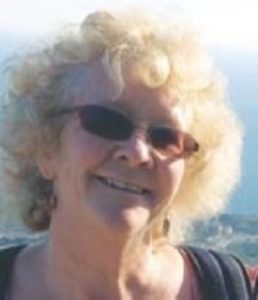
When I trained as a Teacher of the Deaf at Manchester University in the early 1980s, no mention was made of cochlear implants. In fact, I didn’t hear about them until I started working for the Oxfordshire Sensory Support Service in 1995. There I worked with a family and their four year old profoundly deaf little girl, to see them through the lengthy assessment process for a unilateral cochlear implant with Nottingham implant Centre; her operation went ahead in 1996. This was pioneering intervention at the time, this little girl being the first deaf child since birth to undergo implantation from Oxfordshire. Although today this would be seen as a late implanted child, and reservations would be cited in the expectations for progress, this young lady is now in her twenties, and has done extremely well with her implant, using listening as her main means of understanding and she has intelligible speech. She works in a mainstream nursery school.
Since then, many years have passed and I have seen a mountain of children and their families through this process. Some things have changed throughout the years, and some have stayed the same. The assessment process has at least become a lot shorter. There are still the same three cochlear implant companies who provide implants for children in the UK. These are Advanced Bionics, Cochlear and Med-El. They compete with each other for the market, which is healthy for the profession, as they each spur each other on to develop new strategies and electrode arrays for their internal implants and new features for the externally worn processors. At my hospital we offer all three companies’ implants as at the end of the day, we are confident that excellent results can be obtained from all three. I have seen children do really well and exceed expectations with all of the makes of implants.
When I started working as an ICToD in September 2008, the NHS was still only offering unilateral implants (one implant) to both adults and children. Within my first year, NICE (the National Institute for Clinical Excellence) declared that two implants should be offered to children in a simultaneous bilateral operation, and that children who already had only one implant, could come forward for a sequential second implant in their non-implanted ear. At the time, I was of the belief that one implant was what was needed for profoundly deaf children to access speech, and that a second would just add a small amount on top. However, having seen children benefit over the past six years from receiving two implants from the beginning, I have completely changed my opinion. This makes sense. We are born with two ears; our brains are made for bilateral hearing. With two implants I see deaf children in schools listening in a more relaxed manner, overhearing their peers, being able to listen better in background noise, and being able to locate the source of sounds, knowing where to look in the playground when someone is calling them. It has made a huge difference to their listening experience and to their academic progress and possibilities for inclusion. And if one side the batteries go flat, they still have the other ear to rely on.
Another thing that has changed has been the age of implantation. We used to think that an early implanted child was one who received their implants and had them activated under the age of two. There is plenty of research that compares outcome measures for those implanted under two, compared to those implanted between two and four, and those over four years old. Those implanted earlier have better outcomes on the whole. Now, with newborn hearing screening, and earlier referral to implant centres for those with profound deafness, it is now the norm at St Thomas’ for babies referred to us when they are two to three months old, to be activated before their first birthday. We can do the hearing aid trial, and can counsel parents throughout the process of assessment, so that they are comfortable and eager for their baby to have their operation around ten months of age. I have seen more than fifty such children develop natural spoken language alongside their normally hearing peers, and enter school at Reception with language levels that are not just in line with their normally hearing peers, but exceeding normal expectations, as they have had such a strong focus on language learning, from both their family’s input and from local rehabilitation support. Yoshinago-Itano was right in 2000 to predict this possibility. At the time, I thought, well pigs might fly!
However, it is important to remember that not all children (or adults) will make the expected progress with implants. There are many factors which will contribute to the implant experience. Children implanted early may have additional difficulties which were not evident during the assessment process. Children may make slower progress with listening and spoken language, due to specific speech and language disorders, additional learning difficulties, a diagnosis of being on the autistic spectrum, or inconsistency of use of the processors and/or non-attendance at the implant centre for audiological mapping sessions, to name just a few of the variables. The work of the Teacher of the Deaf is to try to maximise the rehab process, working with families and local professionals to achieve the best for each individual.
The outcome of cochlear implantation may often not be the expectation of developing speech for children with complex needs. An increased quality of life may be the hoped for outcome. The Nottingham Implant Centre have produced an excellent monitoring tool for children with complex needs called the Early CaLL which I would recommend to anyone working with this population.
To conclude on a more personal note, it is important to always remember that cochlear implants are not a cure for deafness. The child or adult with cochlear implants is still deaf. They will always be deaf. They need to be brought up knowing this, and be given the opportunity to talk about their deafness and embrace it. They need to know and be able to explain to others that they are deaf, but they have cochlear implants and they wear speech processors to help them to hear. They won’t always be able to wear their speech processors. The batteries might go flat, at some time in their lifetime their implants will fail and need reimplanting, they may not be able to wear their speech processors in the bath or shower or when swimming. So knowing some signs can also be of help. There is still plenty of Deaf Culture for children with cochlear implants.
In the words of one of my four year old children on my caseload when she started in her mainstream reception class last year “Thank you Kathy for my magic ears”.
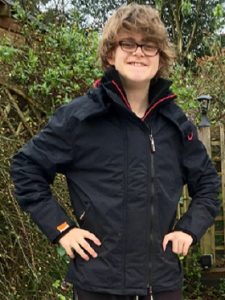
Ethan, our only child was diagnosed as profoundly deaf aged eight weeks. His deafness is sensorineural and no cause has been found. He had some other difficulties – hypotonia (low muscle tone) and a missing vestibular system – which meant he was very delayed sitting up, never crawled, and walked for the first time aged 4. The combination of these factors led to him experiencing a global delay.
Once diagnosed, Ethan’s dad and I found some British Sign Language (BSL) classes and purchased a baby-sign kit. We were accepted on to the implant programme when Ethan was about six months old, and magnetic resonance imaging showed thin auditory nerves. Two radiologists recommended that we didn’t proceed, but our wonderful consultant sought a third opinion, and, aged 15 months, Ethan had a unilateral implant. We understood that the implant might not be as effective as many are, but for us it was a straightforward decision to go ahead anyway. Ethan was getting no benefit from hearing aids, and he was likely to gain considerably even if only from an awareness of environmental sounds. We were firmly of the mind that he would be living in a hearing world and Ethan should be given any available opportunity to access sound.
The operation was successful. However, with hindsight we feel there was a fundamental mistake with the mapping. Due to Ethan’s nerves, the team decided to start him on an unusually cautious map and it took 12 months of no response before the map was increased to more typical levels, after which he began to notice sound. We were encouraged to stop signing and we attended Auditory Verbal Therapy sessions. As Ethan was doing well with his listening we were keen to continue with the oral approach, but concerns about expressive language directed us to have a back-up plan. So we settled in an area with three deaf schools nearby: oral (unit), bi-lingual with English/sign supported English (SSE), and bi-lingual with a strong BSL element. Initially we aimed for oral. It was a battle getting Ethan into the school as his physicality required one-to-one support and the local authority wouldn’t pay and tried to push him into their school for kids with physical needs, with no specialist deaf provision. We won eventually. He had a wonderful year there, the school worked hard with him and were very knowledgeable. In a very thorough annual review, along with the school we decided Ethan would be better off with sign support.
We moved him to the ‘half-way house’ school and began BSL classes and signing at home again. However, although they professed to use both BSL and English in every class, it was more SSE and overall not a high level of sign. We also found that Ethan was not pushed, and very little was expected of him. His education eventually stalled and his behaviour deteriorated. We removed him, having to home-school him briefly, and then enrolled him at the final school with strong BSL. It was life-changing. His academics and language improved dramatically and he responded really well to a very structured approach with high expectations.
Following this, we were able to obtain a place at our dream secondary school for the deaf for Ethan where he returned to an oral environment with transition support. He is now thriving there.
We have always been happy with our decision for Ethan to have an implant. He is able to hear environmental sounds and speech. He perceives syllables, many consonants and some vowel sounds. Who knows how far he can go with it from here? – our ethos has always been to give him the opportunities and see what happens. So far it has reaped huge rewards, even when we have faced strong opposition from professionals. His speech and listening really have exceeded all expectations. On top of this, forever, he will have a wonderfully rich and beautiful language in BSL and a positive deaf identity. We aim never to limit his capabilities through lack of expectation.
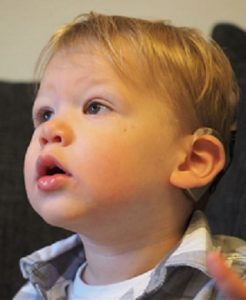
Our son, Raphael, was born on a warm spring day. There were no complications and we were overjoyed to have just given birth to a beautiful, healthy boy.p> You always worry about your child’s health and development, so we were very relieved to see that there were no obvious issues. We allowed ourselves to simply enjoy the first few days (and sleepless nights!) that we had with our newborn son.
Throughout the following day midwives and doctors came and left, each one testing or checking something else. There was so much going on, combined with the overwhelming emotions associated with having a newborn, so we quickly started to ignore the chaos on the post-natal ward. The hearing test was one of those tests to which we did not pay great attention.
The initial hearing test, part of the newborn screening, proved ‘inconclusive’. We were not worried in the slightest since the midwives comforted us by saying that this happens frequently and was likely to be due to a build-up of fluid in Raphael’s ears. The second failed hearing test was slightly more worrying, but we were once again comforted by the midwives into thinking that it was very unlikely that something was wrong. After all, why would there be a problem with Raphael’s hearing? Neither of us have hearing loss and we were unaware of any family members (going back several generations) who were born with any degree of hearing loss.
After being released from hospital, we were referred for an ABR. Whilst the test was taking place the audiologists did an outstanding job of hiding the fact that Raphael was failing every single part of the test as his hearing nerve in each ear failed to respond at 80 decibels across each frequency. After what felt like an eternity, when the technician left the room for further analysis, we were introduced to the head of the audiology department. This was our first warning sign. The consultant was very polite and began the conversation by asking about us and what we do. We immediately started to feel uncomfortable. No consultant has time for such pleasantries unless they are about to deliver bad news. And so she did – informing us that Raphael had a profound hearing loss in both ears.
After a few minutes of letting the shock sink in (a year has now gone past and sometimes it feels like it has still not sunk in), we were told that there was something we could do – the cochlear implant. In our complete ignorance of the deaf world until that day, we did not even know what a cochlear implant was. It was also not very clear how bad his hearing loss was. The hearing loss was always discussed in terms of decibels, frequencies and audiograms. “We tested Raphael up to 80dB and there was no response across all frequencies”. For someone who had never heard of an audiogram before that fateful day, this was very confusing. All we wanted to know was whether he could hear us speak and whether he could hear us sing to him? To efficient and busy audiologists, the above questions could be simply answered by a bland statement – “we tested Raphael up to 80db and there was no response across all frequencies”.
Over the next few weeks we tried to learn more about cochlear implants and hearing loss in general. To us, Raphael having a cochlear implant was never a debate. It was a fact. We were of course ignorant of the medical process and risks. As the surgery date approached, however, we became tense and anxious. Would it be successful? Would his facial nerve be damaged? Would his balance be affected? Would they need to cut his taste nerve? Would he suffer from an infection? The list of questions went on and on but still the question of whether to implant or not was never asked. Simply put, the potential return outweighed the risks. We needed our son to be able to hear and we would do whatever it took to give him the wonderful opportunity that a cochlear implant provided.
We were also entirely unaware of the deep division between the deaf and hearing communities when it came to cochlear implants. Despite this, to us, the idea that our son would never hear is as unimaginable as him becoming a Chelsea fan! No thanks!
Over time we became semi-experts on the subject of cochlear implants, as almost every parent of a deaf child who undergoes such surgery eventually does. The deaf community’s argument never really convinced us. We firmly believe that giving our son the ability to hear is a priceless gift. Maybe our son is perfect the way he was born, but why not give him this extra tool to allow him to experience the world more fully through sound?
Fast forward several months and just before he turned 11 months, Raphael finally had his surgery. Two weeks later his implants were switched on. Thankfully the surgery had gone smoothly and there were no complications. It felt like a dark cloud had disappeared and the sun was shining again. Of course, the hard work had only just begun, but the surgeons had done their part and Raphael’s future development was now in our hands and we fully intended to rise to the challenge.
Two months have now gone by since Raphael’s implants were switched on and we can now say, without a shadow of a doubt, that implanting Raphael was the best decision we have made. He is turning to sounds all the time. He responds to his name. When we say “woof woof” he drops everything and collects his favourite toy dog and proudly holds it up in the air. When daddy comes home from work, he is no longer greeted by Raphael’s back, but Raphael turns to him with a wide smile on his face. Such a difference from a couple of months earlier and making everything worthwhile!
Only time will tell whether Raphael will agree with our decision to have CIs. If not, then he can always choose to take them off. But we suspect that he will one day appreciate this great gift that science and technology have provided and be thankful to all those who helped him receive his cochlear implants in the same way that we are. To us, put simply, it feels like a miracle.
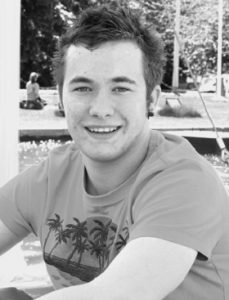
Rob was born in 1994. He received his first cochlear implant when he was three and his other ear was implanted at fourteen. He studied art and design in college, and is currently an administration apprentice with the Civil Service. He has a passion for glamour, especially musical theatre and travelling and has a UK network of hearing friends who share those interests. His brother, Owain, is two years older and has left home. Rob still lives with his parents and has threatened never to leave.
Rob’s first couple of years of life were pretty unremarkable apart from some doubts about his hearing. He was beginning to talk and sing and we were convinced everything was okay. Then around about the time of his second birthday, we realised that there was something wrong and sought help. On 12th March 1996 Rob was diagnosed with a severe sensorineural hearing loss. We don’t know the reason, but Connexin 26 has been ruled out.
We were devastated. There followed tests in different places, hospital exploration, hearing aid fitting sessions – an endless round of visits and professional interventions. The hearing aids didn’t help and he hated them, hiding them whenever he could. We researched all our options – more difficult in 1996 than it is now with the ready availability of the Internet. It became clear to us that a cochlear implant was a sensible option. The thought of surgery was horrible but the decision was relatively easy to make. Given that he had no benefit from conventional aids we asked ourselves how we would be able to explain to him that we had been too cowardly to decide to give him a chance to hear. Eleven years later Rob made the decision to have a second implant.
When Rob was diagnosed, we embarked on total communication strategies and went to sign language classes. That seems a distant memory now as he is fully aural/oral and reserves his relatively limited sign language for use with deaf friends; although he struggles to keep up with them.
Rob’s switch-on for the first implant was underwhelming. He gave no sign of receiving any stimulation. It was three months or so before we were confident it was working. He was subjected to a demanding programme of rehabilitation. Having recently looked at videos from that time, we had forgotten how challenging that had been. Keeping a lively three or four year old on task was a nightmare. At his second switch-on eleven years later, Robert was able to explain the sound he heard in his new implant – “spludgy rain drops.”
We did not really work very hard on rehabilitation with his new implant. With a little persuasion he wore it all the time from the start. We know from audiology that both implants are working optimally. In practice the difference made by the second is relatively subtle. However very recently he spent a day with only one implant working and made unsolicited comments about how much harder he had found it with one and how pleased he was to have two. He finds it a little easier to locate sounds, he has stopped turning his first side to speakers in difficult environments, background noise is less of a challenge (but still significant) and he doesn’t get nearly as tired. He works really hard at all he does, and it is easy to overlook the extra effort he has to make just to be able to hear before he does anything else.
Fortunately Rob attended small, rural primary and secondary schools and was supported by a full-time classroom assistant and a peripatetic Teacher of the Deaf. It was very important to us that he should not be sent away to school.
In the early days we knew nothing about deafness or cochlear implants, and over the years it has been very important and valuable for the whole family to spend time with other families in a similar situation with whom we can identify and share experiences and frustrations.
Rob has been very fortunate in his experience of cochlear implants. I doubt he would be such a confident, happy, successful young man without them.
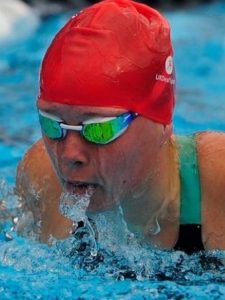
Hello! My name is Polly Saines and I am 16 years old. I am profoundly deaf with bilateral cochlear implants.
I had been diagnosed as partially deaf when I was 2½ years old. I was profoundly deaf in my left ear and moderately deaf in my right. I then only wore a hearing aid in my right ear.
When I was 6 years old, I woke up one morning to find I could not hear at all. This was a really frightening time and after finally getting an appointment at St. Helier Hospital in Surrey, they confirmed my hearing had been lost. It was at a visit to a hearing specialist at that time that the possibility of having a cochlear implant was first suggested. A CT scan confirmed my hearing loss was due to a Widened Vestibular Aqueduct.
Back then, the waiting time to receive a cochlear implant on the NHS was over 2 years. Luckily, the private health care our family had, agreed to cover the cost of the implant operation.
Whilst all of this was being sorted out I was not having a good time. I found it very hard to communicate with my family. I live with my Mum, Dad and 2 elder sisters, and I felt myself getting very angry and cross a lot. I also did not like being on my own. My confidence at this time was as low as it has ever been.
In August of that year, my cochlear implant was switched on, and the following month I was starting at a new school. This was a very small mainstream school, which I still go to, and I am taking my GCSEs this summer.
I feel very lucky to have been able to have gone to the school I have, and feel very strongly that being with a small number of pupils, who I have remained friends with throughout my school life, has helped me with my confidence. I don’t think this would have been the case had I have gone to a larger school, but I realise that not everybody has this choice.
During my time at school I have never been bullied, and nobody has made fun of my implants.
When I was 12 years old the NHS offered me a cochlear implant for my left ear, as the first one had been done privately. Having 2 implants improved my hearing further and made a noticeable difference to being able to cope in school. Unfortunately, in January this year the implant failed due to a manufacturer’s fault, and I then had to have a further operation to replace the faulty device. During the time from when the implant failed to when a new one was switched back on, I once again found things very difficult, and it was badly timed as I had started to revise for my exams.
Next September I am due to go a large mainstream local sixth form college, with over 2,000 pupils. I am looking forward to this rather than worrying too much about it.
When I was about 9 years old I decided I wanted to join the school swimming club. At that time I was told I was not fast enough, so I therefore joined the local swimming club in order to become quicker. My Mum had to find out the correct way I should be started (as I can’t hear a starting gun when my implants are off), and we were put in contact with Vincent Dickson, who at that time was Chairman of the Great Britain Deaf Swimming Club.
He then asked if I would like to compete in my first National Deaf Swimming Championships. These are held annually, and I found I really enjoyed the company of other deaf children and adults, all of whom are very committed to competitive swimming. I quickly made lots of friends who come from all over the country, and are now my really close friends and I keep in contact with them a lot. As I continued to train and compete with a couple of local clubs, I managed to win a lot of medals at local, County, Regional and National level. Being successful at this level gave me a lot of confidence when in the company of both deaf and hearing swimming friends.
As I improved more, the local press began to take a bit of interest, and my school has been fantastic by letting me have time off to attend galas all over the country. As I became better at the sport, my school began to announce my achievements, and seemed very proud of what I had done. It was comforting to know that my school seemed to place a lot of importance on this side of my life, rather than just academic achievements. I cannot state strongly enough how much this has helped me.
Last year I was selected to represent Great Britain in the European Deaf Swimming Championships in Russia, where I made the final in the 200m butterfly coming 5th in Europe, and once my GCSEs are over this year I will be training extremely hard for the World Deaf Championships in August in Texas, where I would hope to make some finals.
I would like to finish by saying I not only feel my confidence has come from my schooling but I have also had extremely supportive teachers, Teachers of the Deaf and my classroom helper and I am the third child in a hearing family. All my family have been very supportive.
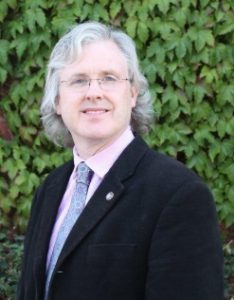
Upon switch on, I heard a weird sound. It was the same sound whether a person was speaking or a door closing. Everything was at the same frequency. “Goodness me, is this what the world really sounds like?” I thought. My hearing therapist spoke and it seemed that in every word there was a painful sound stabbing at me. It turned out to be “S”. “Please can you sit there?” “So, can you hear any sounds?” It was all at one single high pitch. Had this person inhaled helium?
When I left the hospital and walked to the station to get the train home, sounds jumped out at me and I could not work out what they were. I could hear a loud painful rhythmic sound and I looked around to work out what on earth it was. There were crowds of people walking alongside me, and I made the connection between this sound and their footsteps. Those with high heels were the worst!
On the train I was plagued by a continuous noise. I could not tell where the sound was coming from, so I had to look all around me to try and locate it. I decided it came from a lady eating crisps, the packet causing ripples of horrible sounds, and all that was a few seats away from me! I got home, and had to ask my children to be quiet as the sounds hurt and felt too loud.
A month after “switch-on” I sat at my desk quietly after everyone had departed for home. I listened to the sounds around me and tried to label them and thus tune into them. It took me about 20 minutes to work out that one sound was the clock ticking in my office. One less sound to worry about, onto the next – people fiddling with pens, typing, a lorry reversing outside, all these horrible sharp sounds hijacked my brain!
A few months later, the environmental sounds had faded into the background. I was no longer tormented by the sound of my own footsteps duping me into believing someone was following me. I could hear the doorbell, the phone ringing, and a computer fan whirring quite clearly. I was able to differentiate a male from a female voice. Previously I could appreciate accents, but the cochlear implant removed this, and all accents have been flattened to sound the same. Whilst I could hear voices, I could not understand them any more clearly than I could with hearing aid. Speech has a huge range of sounds, too huge. I can hear the individual sounds but cannot make sense of them. Church has a sound at the start and the end “ch” that I did not know how to make. There is no clue to this sound just by lipreading someone saying church.
I couldn’t believe I’d pronounced words wrongly all this time. My confidence to speak to people nose-dived. I could now hear my own voice, I knew I was saying it all wrong, but I didn’t know how to say it right. I felt I was developing a mild stammer as I stumbled across words I suspected I was pronouncing wrongly. My own voice also sounded loud to me so I turned it down, then people would say I was speaking too quietly, how could I learn to pick the right volume?
I could hear a radio blaring, voices coming on, but I could not understand what was being said. I was reminded by my hearing therapist that I am still very deaf. A normal functioning ear would have about 50 thousands “channels” to help process sound and gain a full understanding of what is being said. The cochlear implant only gives me 9 “channels”.
Using my old hearing aid, at a time when I had some useful hearing from it, I could recognise my name when someone called me, Philip. But with the cochlear implant, I could not do this. It was then explained to me that I needed to learn to recognise the new sound of “Philip” as it would sound different to me now. So I got someone to say “Philip” from behind; practice makes perfect they say and I remained determined to respond when my name was called. Aside from all the hard work of training my brain to hear, one of the bonuses I get now is a hot cup of tea as I can hear when the kettle has boiled!
The outside gave another host of sounds to categorise and label. When asked, someone said the noise I could hear was the birds. I associated the sound to a bird. I then heard a different sound. It was a van reversing with a beeping noise. I then heard another sound and was shocked when told that it was a different type of bird. I did not realise that there was more than one bird sound. How was I supposed to learn it all and the desperate thought, that if I don’t, it will remain like an out of tune radio. I needed to associate it and file it away somewhere in the brain so it did not continue to annoy me. On occasions, I asked someone what a noise was and got the reply “don’t know”. Hearing people learn to switch off these background sounds.
I took pleasure in the small steps of progress. I moved out of the way as I heard a bicycle bell chime behind me on the canal towpath. Usually I would have been startled when someone cycled up behind me or speeded past just inches away! Sometimes they would grumble as they passed, as clearly they had been trying to tell me to move aside for a while.
A major impetus for having a cochlear implant had been the loss of my last 20 decibels of hearing leaving me totally deaf. A further objective was to be rid of my tinnitus. I am pleased to say that the tinnitus has completely gone with the added bonus I can hear sounds. On paper, I have some hearing at last, after having to manage with very little hearing since birth. My aim was achieved, so why do I still feel so low? Probably because I now realise that it’s going to take me a long, long time before I can use that hearing to actually usefully hear. I wonder if I will ever fully understand the sounds and access the potential of my increased hearing. It is a tough training regime for my brain, the hardest endurance exercise I have ever had to undergo.
The journey of each person who has a cochlear implant will be different depending on the level of hearing they’ve had through their life. I was told the implant would bring back what I had lost. The range of hearing I have now, on paper, is greater than I have ever had, yet learning to use this expanded range poses challenges. According to experts, brains are prepared to learn for two years. I am trying to squeeze everything in to maximise the benefits.
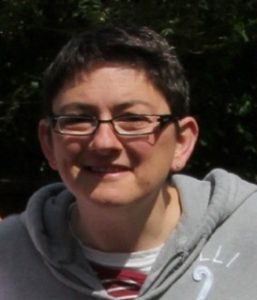
Part One 1980-2009
I am profoundly deaf from birth. I grew up with the strongest hearing aids aided in both ears. I had a body worn aid from 18 months old until I was 9 years old when I got behind the ear hearing aids. In those days (late 1970s / early 1980s) my hearing aids were Philips.
Then from the 1980s, I wore Phonak Superfront hearing aids (PPCL4+). I was used to limited low frequency sounds through the aids – nothing else existed. Then, in 2004, I got the Phonak Superos digital aids. My audiologist was pointing out to me that I didn’t really get anything through them and wanted to consider me for a cochlear implant in 2005. Being a proud BSL user with a strong Deaf Identity, I said ‘no’ to a Cochlear Implant (CI).
I visited the audiologist again at the beginning of 2007, as one of my hearing aids had broken, and she mentioned the CI again. I had a friend with me who could see the benefits of cochlear implants – to be able to hear sounds that would be especially useful in terms of health and safety as I lived alone and my job involved visits to quarries, even though on work site visits I have BSL interpreters with me.
I asked one question before embarking on this CI journey: once the CI assessment process has started, can I pull out at any time? After being reassured I could I went ahead with the CI assessment procedure.
As I embarked on my CI journey, I met others with CIs who used BSL and I thought I had nothing to lose so I went for it. I had my operation on 4 February 2008 and was switched on 3 March 2008 with the Cochlear Nucleus Freedom processor.
When I was switched on, I could not hear anything. All I got was silent vibes inside my head but no sound. A week later I got my first sound – footsteps of a woman’s high heels in Sainsburys!
Slowly sounds started to come. I didn’t hear the birds until a month after switch on. Some environmental sounds were coming in but speech wasn’t. Speech didn’t make any sense. Music had too many gaps! Speech sounded too scratchy – the same effect as nails being scratched down a blackboard!
A year later, I still wasn’t really achieving much with my cochlear implant. I got sounds but still couldn’t understand speech. People who knew me and saw me regularly got over-excited with the prospect of me hearing with a CI and so their expectations were raised too high. Some of them started treating me as though I were a CI failure because I couldn’t understand or follow speech. My confidence dropped very badly and a horrific hate relationship with my CI began – I didn’t know where I stood with it. My experience was so bad that I took it off angrily when I got home in the evenings with sheer frustration and just resorted back to what I was used to – hearing aid.
My relationship with and experiences of my CI in the hearing world was so negative that my hate relationship with the CI was very intense and it took over my life! It was all I could talk about sometimes. Fortunately I never had any problems with the attitude of the Deaf World but my experience of CI in the hearing world was so bad that I didn’t even feel like going out to Deaf World events – I was withdrawing into my own world as my confidence was being destroyed. I went from a fully confident individual who was very positive about everything and full of energy to one whose confidence was totally thrown out of the window and was made to feel like a no-body and had no energy. I felt as though I had made a huge mistake having the operation. It wasn’t working and I then resorted to going without it for 6 months and even a year at a time.
Part Two 2008-2014
In the first year after implantation it was hard finding the support out there. It was then that I found support from The Ear Foundation. I just came across it on Google. I never thought what it would lead to once I made that initial contact. In the summer of 2008 I had my first meeting. They were very friendly and supportive but there weren’t any other BSL users with CI like me. When I went back again at the end of October 2008 I met other born deaf CI users who were similar age to me and used BSL. Even though I only saw them once every few months, the troubles I had with my CI were too great to keep me away from the Ear Foundation. It was the start of making new friends with others in a similar boat to me.
Away from the Ear Foundation, my CI was totally unbearable. Not only that I used to always feel tense when the CI was on, and I would feel tingling across my chest and down my arms. The lower part of my left leg hurt and I could not hear very far (up to 2m max). We couldn’t see what the problem was. Computer results from the CI centre didn’t identify any fault. So yet again I would be without the CI for another 6 months.
This carried on through 2012 and much of 2013.
October 2011 was the Deaf Sencity Event – Deaf vibes ‘til the early hours at the O2 in North Greenwich, London. I went along with friends. As we got nearer the entrance, I noted that there were two queues trying to get through security. I was in the longer one so I thought I’d take a peak to see if we could get through quicker. To my astonishment, the short queue was full of BSL users with Cochlear Implants. This was a turning point – Cochlear Implants were getting more and more widespread throughout the Deaf Community and they were EVEN being accepted as part of Deaf Culture. I stayed in the shorter queue by the way. As we were all CI users and needed to enter the security zone by being body searched as that time, we could not go through the security frame.
By going without a CI in the hearing world for nearly a year (2012) it made some of the people around me think again. They started again to use their deaf awareness and communication started to improve. I just wore a hearing aid for part of that time to give me some sense of ‘normality’ again, but I couldn’t hear much with it so didn’t wear it all the time.
In September 2013 I started University again to study for a second MSc (I already have one MSc gained in 2006). For my first day at Uni this time I had my CI on my ear switched off and my hearing aid in the other ear switched off as I had forgotten the battery! Last time I was in Uni I used two hearing aids and an FM system. This time I was in complete silence – it felt odd! The following week I didn’t wear the hearing aid but I still attended lectures with my CI on my ear with it turned off. It didn’t matter anyway, I had a BSL interpreter and notetaker there. It still didn’t feel right to be without sound, but my CI didn’t give me a comfortable experience in terms of the way the electrical simulation impacted my body so I couldn’t bear to be switched on in a speech environment. So I carried on without sound in lectures.
In December 2013, I was upgraded to a new CI processor, the Cochlear N6. As soon as I was switched on with that I noticed a huge difference. Sounds were suddenly much more comfortable to hear, clearer, heard from further away and no negative impact on my body. My body took to it quite well! I was relieved as comparing my experiences with those of my Deaf friends who also used BSL, they did not suffer what I suffered and they heard from further away than me. So all along I had a faulty processor and yet some people did not understand what I was going through.
The turn around:
Things started to improve. I started to go around with my CI switched on more but only for environmental sounds away from my home and speech environments , i.e. London. The quality of music improved. I went back to the same rock concert (Bryan Adams) I attended a few years previously and commented “oh has his PA system improved?” when actually it wasn’t him but me who’d improved through the Cochlear N6 CI processor.
I then began to switch on again in speaking environments. Firstly at University in January 2014. It was a safe environment as I had my BSL interpreter and notetaker there to support me. Then the sound of the lecturer’s voice felt so distant, the sound of students ruffling their papers nearby took over the sound of the lecturer’s voice. Watching the interpreter with a slight input of sound of the lecturer’s voice and overriding students’ paper noise to warrant concentration and alertness failed. I needed extra simulation and a stronger connection to the person speaking. Someone suggested using an FM system.
Luckily, I had an FM system – the Phonak Smartlink+. It hadn’t been used for 3 years. I emailed the lecturers the day before I started using the FM system at University to let them know about it and to explain what it was. No problem. At least they were aware when I gave the transmitter to them the next day and knew what to do! My interpreters, notetaker, lecturers and I noticed the difference! I was awake! I was more connected to the lecture environment and even though I didn’t understand the words that were being fed to my CI, my interpreter gave me the words translated into BSL. The whole thing together somehow worked – the whole thing was a success to my surprise! This was the way forward from that point. My confidence began to be restored and grew and I had a far better relationship with my CI. It no longer took over my life…it just came with me! The hearing aid was ditched in my other ear and has never been worn again since!


